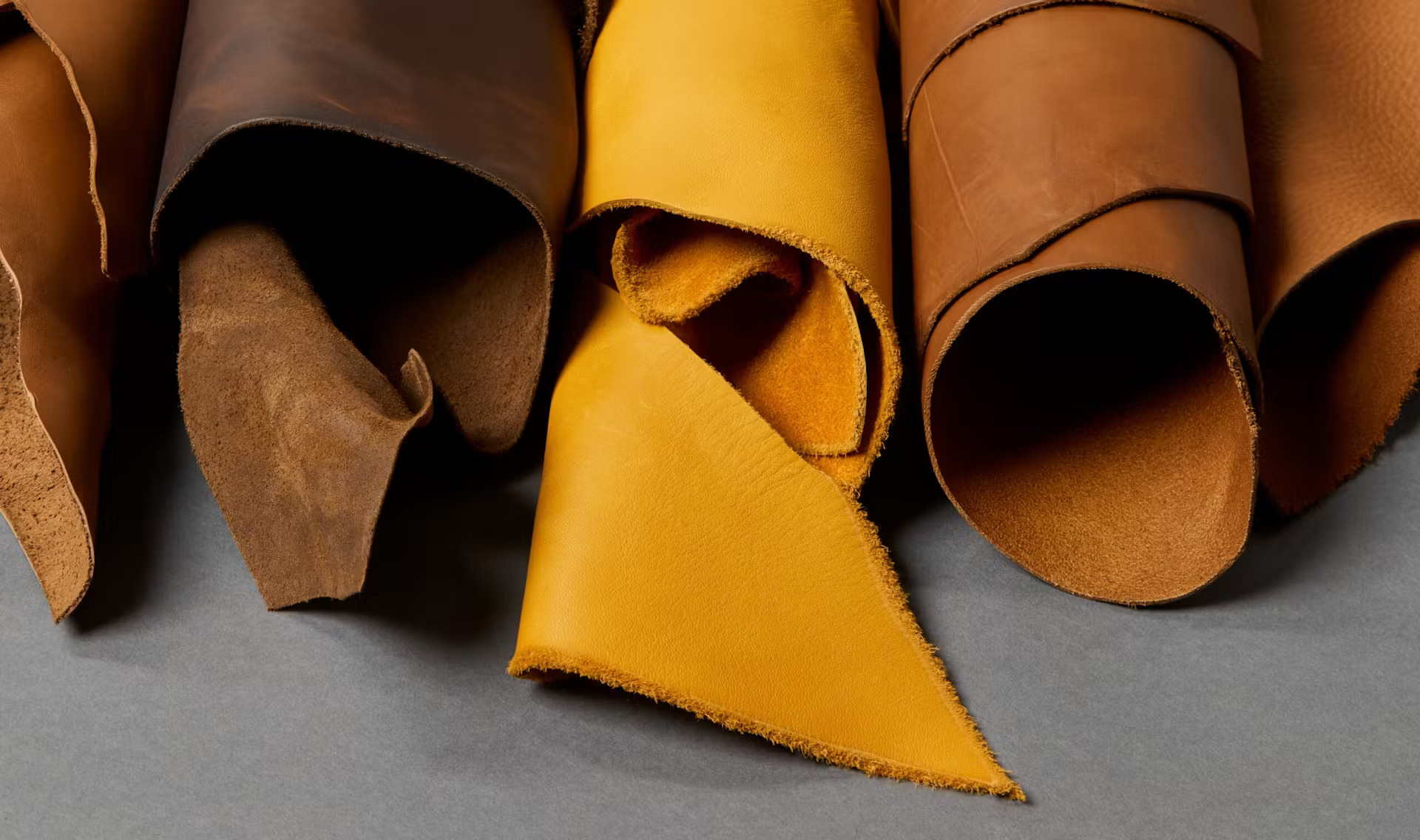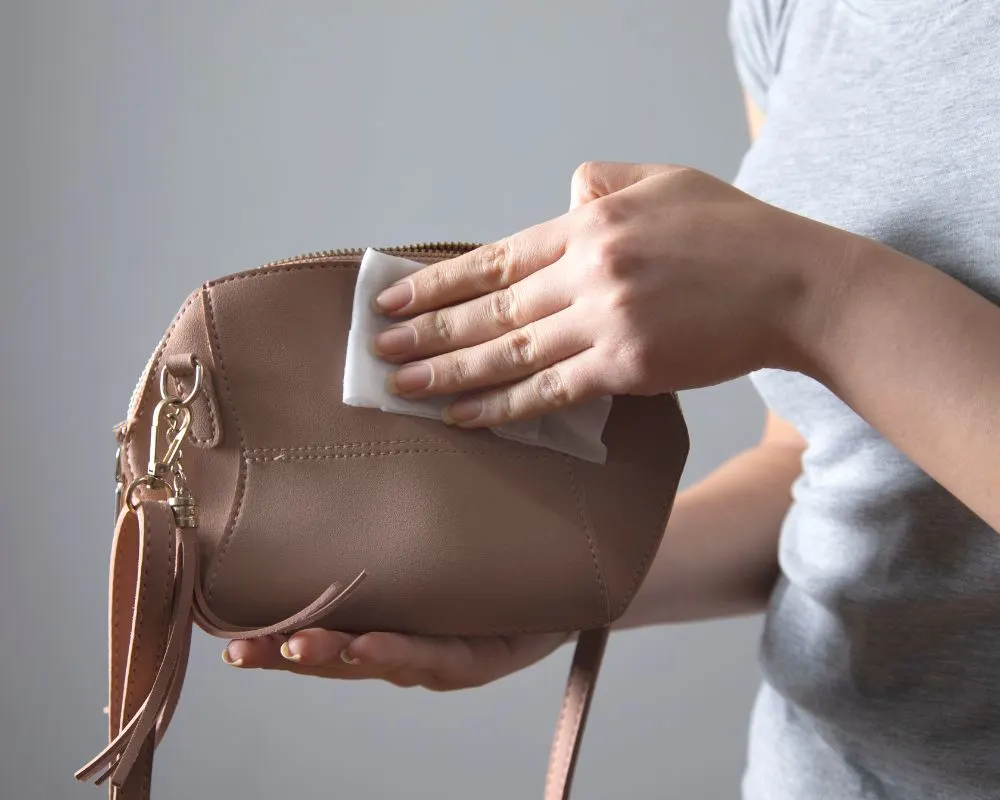Searching for a leather product and discovering different types of leather, you are now confused about which one to get and add to your collection.
Buying leather is an art; here is how you can master it. So, let’s understand the difference between “100% leather” and “genuine leather.” While both sound impressive, there’s a huge difference between them regarding quality and durability.
Difference Between Genuine Leather and 100% Leather
Before we understand and figure out the difference between 100% leather and genuine leather, let’s understand the meaning of “Leather,” as it is a broad term with many types and grades.
Genuine leather is a type of leather that falls on the lower end in terms of quality. On the other hand, 100% leather generally means a higher grade of leather, which could be misleading sometimes, but once you understand how to select it, you are good to go.
So, let’s understand the basics.
The Basics of Genuine Leather
The term genuine leather refers to the lowest grade of real leather that is currently available in the market. It is manufactured from the layers of hide left after the top-grain and full-grain layers have been removed.
These lower-grade layers are then processed and treated to create genuine leather. While it is indeed genuine leather, it lacks the high qualities and durability that make it stand out.
How to Spot Genuine Leather

- Start by Checking Its Appearance: Genuine leather often has a uniform, smooth appearance with fewer natural imperfections. It may lack the richness and depth of texture found in higher-quality leathers. You have to look that out when you are buying leather.
- How long does it last? Compared to other types of leather, genuine leather is less durable. It is more prone to wear and tear and may not age as nicely as any other high-quality leather. So look out for durability.
- Check out the cost: Genuine leather is typically more affordable than higher-quality leather grades, making it a good alternative for budget-conscious shoppers.
- Look for texture: When you are choosing texture, you should look out for texture. It should have a consistent, processed texture that lacks the natural grain patterns and unique characteristics found in top-grain and full-grain leather.
The Basics of 100% Leather
When it comes to “100% leather,” you should check that the entire product is entirely composed of real leather. But sometimes, the leather does not provide or specify the grade or quality of the leather used.
So, it could be genuine leather or higher-grade leather, which is where confusion often starts. So, if you want to see if it is 100% leather, then you should look for additional options on the leather or ask the retailer.
How to Spot 100% Leather
- Do a quality check: When it comes to 100% leather, as it has not specified the grade, the quality can vary significantly. It could be anywhere from genuine leather to top-grain or full-grain leather; each would have different factors.
- Look out for durability: When you use 100% genuine leather, it will last you a long, long time.
- It will look different: The appearance of 100% leather products will make them stand out, and it will scream authenticity.
- The cost is attached: 100% leather costs more. But it can also depend on the kind of leather you are buying. Higher-quality leather products tend to be more expensive.
Things You Should Keep in Mind While Choosing a Leather
When shopping for leather products, it’s important to understand the differences between genuine leather and 100% leather.


Some things to keep in mind are as follows.
- Always check for labels: When you are buying leather goods, check product descriptions that specify the type of leather used. If it’s labeled as “genuine leather,” be aware that it’s on the lower end of the quality spectrum. If it’s labeled as “top-grain” or “full-grain,” you can expect higher quality.
- Feel the texture: You should feel the texture of the leather. Higher-quality leathers like top-grain and full-grain will have more natural variations and a rich, luxurious feel.
- Do not shy away from asking questions: Don’t be afraid to ask the retailer or manufacturer about the grade of leather used you are spending your money on, and you deserve to know what kind of leather you are getting.
- Check Price: Check price and other factors while buying leather goods. Sometimes, it really is about the price of the product.
- Look out for details: When buying a product, pay attention to its overall craftsmanship. Quality stitching, hardware, and attention to detail indicate a well-made leather product.
Apart from that, factors like the build and quality of furniture also play a pivotal role in determining how the leather will eventually turn up; having that said, you can also check our detailed guide on palliser furniture reviews, which has been among the top demanding element in the recent time.
Conclusion
In today’s world, leather products are categorized in different scales.
There are so many different types and ways. If you want to buy real leather, you have to understand how to make wise purchasing decisions.
Inspecting the product, inquiring about the type of leather used, and considering your budget is crucial. If you know the answer to all this, you will know the kind of leather you are buying and the money you are spending is worth it.
If you are interested in understanding the details of products like leather, you should follow our blog to get all the updates you want and make smart decisions.